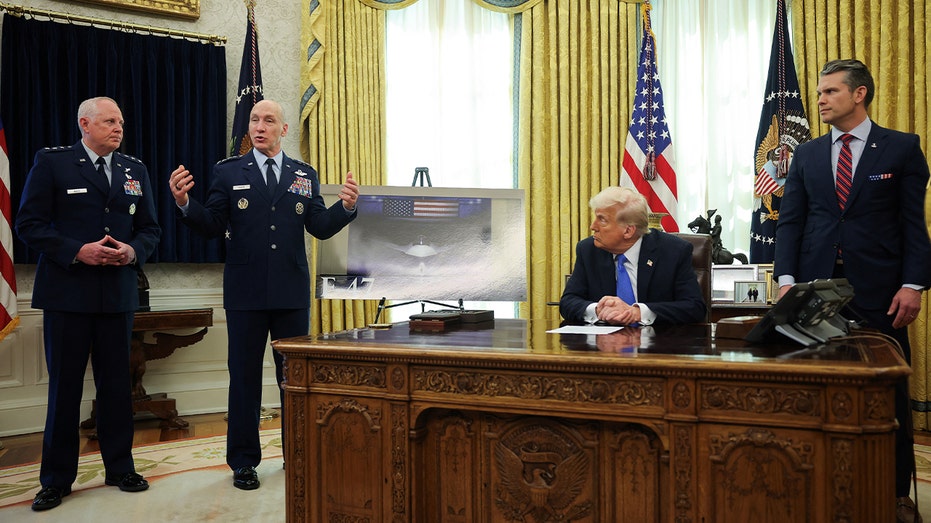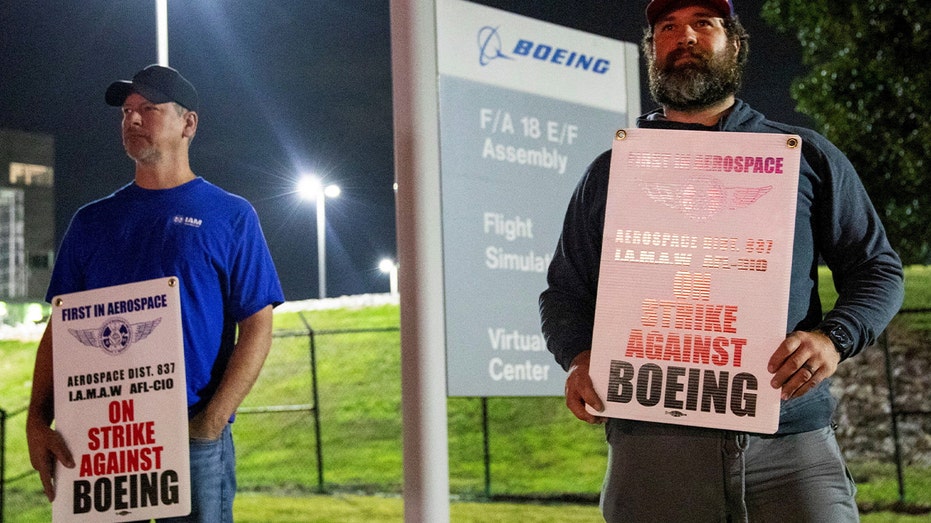A major strike by Boeing’s defense unit employees threatens production of a number of U.S. fighter jets — including the new F-47 President Donald Trump announced in March.
Some 3,200 defense unit employees went on strike Monday after contract negotiations fell apart, stalling work in the unit that assembles and maintains the Air Force’s F-15 fighter jet and the F/A-18 Hornet, flown by the Navy and the Marine Corps.
The District 837 workers also assemble the T-7 trainer and the MQ-25, an aerial refueling unmanned aircraft.
While this strike involves a far smaller workforce and began before full F‑47 production, it still threatens delays and cost overruns as Boeing ramps up investment in the F‑47 — including a major expansion of its St. Louis production line.
INSIDE AMERICA’S 6TH-GEN ARSENAL: B-21, F-47, AND THE FUTURE OF AIR DOMINANCE
A delay could force rescheduling of testing, supply chain deliveries, and depot work, even if the strike ends swiftly. However, Boeing CEO Kelly Ortberg downplayed the effects of the walkout.
“The order of magnitude of this is much, much less than last year’s Seattle strike of 30,000 workers,” he said. “I wouldn’t worry too much about the implications of the strike. We’ll manage our way through that.”
That strike lasted 54 days and delayed deliveries of the KC-46 and the P-8 Poseidon aircraft. Boeing suffered at least $5.5 billion in lost earnings in the first six weeks of the strike, according to Anderson Economic Group.
Boeing has said it would activate contingency plans, possibly assigning non-union or third-party workers to keep essential tasks moving.
The F-47, the sixth-generation aircraft championed by the president, is designed to replace the aging F-22 fleet, with 185 aircraft planned for production. It’s expected to have greater stealth, an AI-assisted cockpit outfitted for continuous upgrades and a command and control node to fly with collaborative combat aircraft, or drone swarms that support its capabilities.
Air Force Chief of Staff Gen. David Allvin said in May he expected the aircraft to take flight any time between 2025 and 2029, but fully operational deployment is not expected until the early 2030s.
If Boeing breaches the impasse between corporate and its District 837 workers within a matter of weeks, the company could likely make up for lost time. However, if the dispute escalates, other districts join in or key tasks are postponed, Boeing may need to seek program extensions with the Defense Department.
THE FUTURE OF AIR COMBAT: HOW LONG WILL THE US MILITARY STILL NEED PILOTS?

If history is a guide, the longer the stoppage, the more likely the strike will shift downstream deliveries and readiness support — not just for the F‑47, but for related fighter programs as well.
The workers who assemble the fighter jets turned down a four-year contract that would have raised the average wage by roughly 40% and included a 20% general wage increase and a $5,000 ratification bonus, according to Reuters. It also included increasing periodic raises, more vacation time and sick leave.
“IAM District 837 members build the aircraft and defense systems that keep our country safe,” IAM Midwest Territory General Vice President Sam Cicinelli said in a statement on Sunday. “They deserve nothing less than a contract that keeps their families secure and recognizes their unmatched expertise.”
“We’re disappointed our employees rejected an offer that featured 40% average wage growth and resolved their primary issue on alternative work schedules,” Dan Gillian, Boeing Air Dominance vice president, general manager and senior St. Louis site executive, said in a statement about the strike.
“We are prepared for a strike and have fully implemented our contingency plan to ensure our non-striking workforce can continue supporting our customers.”
Boeing’s Defense, Space and Security unit has reported nearly $11 billion in losses from late 2021 through the end of last year, mostly due to fixed-price Pentagon contracts that put the company on the hook for cost overruns, including for two new Air Force One jets.

However, so far this year, the unit has returned to profitability.
Meanwhile, the F-47 has already hit another snag, the advanced engines that were expected to be used in the plane are delayed by another two years.
Engine makers GE Aerospace and RTX subsidiary Pratt & Whitney are currently developing competing engine designs for the Next Generation Adaptive Propulsion program.
Fiscal year 2025 budget documents suggested the engine designs would be ready by the fourth quarter of FY 2027. However, the Trump administration’s budget request for FY 2026 suggested that the timeline has been shifted over two years to the second quarter of FY 2030.
An Air Force spokesperson confirmed to BreakingDefense that the updated timeline reflected “supply challenges” of the program.
Fox Business’ Pilar Arias contributed to this report.
Read the full article here















